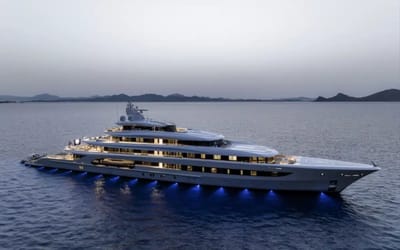World’s largest plane is 35 meters longer than the Airbus A380
- The world’s largest plane is currently the Airbus A380
- However, US-based energy company, Radia, is building a contender for that title
- Named WindRunner, the aircraft is designed to transport gigantic wind turbine blades
Published on Jul 12, 2024 at 8:24 PM (UTC+4)
by Amelia Jean Hershman-Jones
Last updated on Jul 15, 2024 at 1:16 AM (UTC+4)
Edited by
Kate Bain
US-based energy company, Radia, is working on what they hope will be the world’s largest plane and fly high above the size of the Airbus A380.
It’s a massive 35 m (115 ft) longer than its competitor and predecessor.
And it has a very specific purpose.
READ MORE: Inside the $78 Million private jet that’s owned by Elon Musk, Cristiano Ronaldo and Jeff Bezos
Windrunner aircraft: the world’s largest plane?
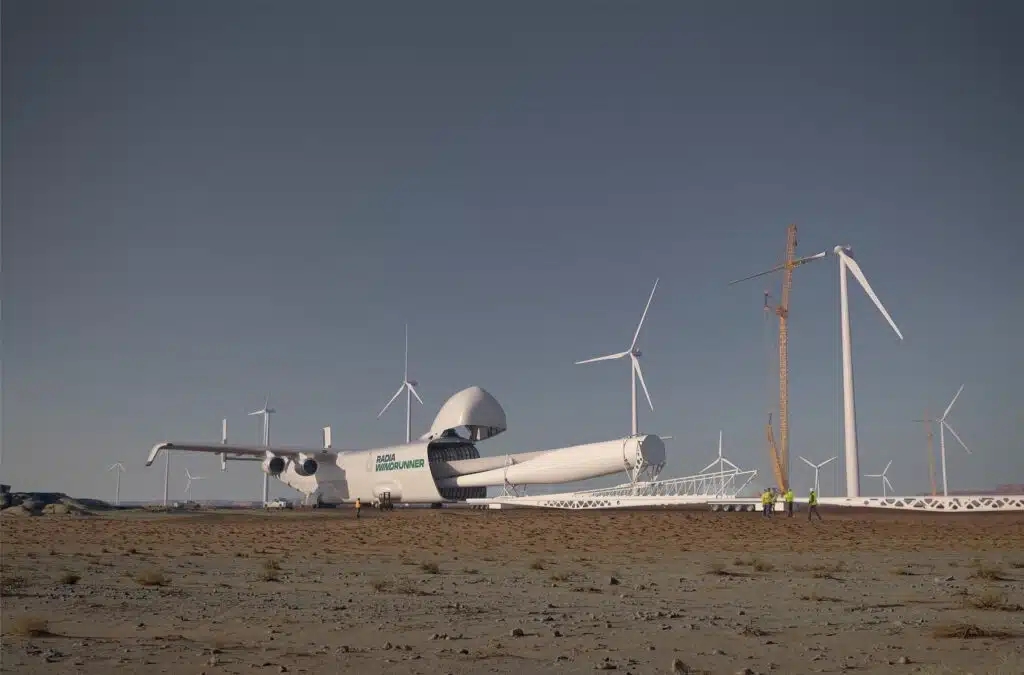
Labeled Windrunner, the world’s largest plane will dwarf the Airbus A380 – an aircraft that makes other jets look tiny – by 35 m (115 ft).
It will be 108.5 m (356 ft) long in total.
Currently in development, WindRunner will optimize on volume instead of weight.
Plans were revealed earlier this year.
Able to carry 70 tons, it has a volume that’s 12 times bigger than a 747 aircraft, Lundstrom explained.
Crucially, the cargo hold can carry a 100-meter-plus wind turbine blade with a 2,000 km range – which is what it was designed to do.
More on that below.
GigaWind initiative
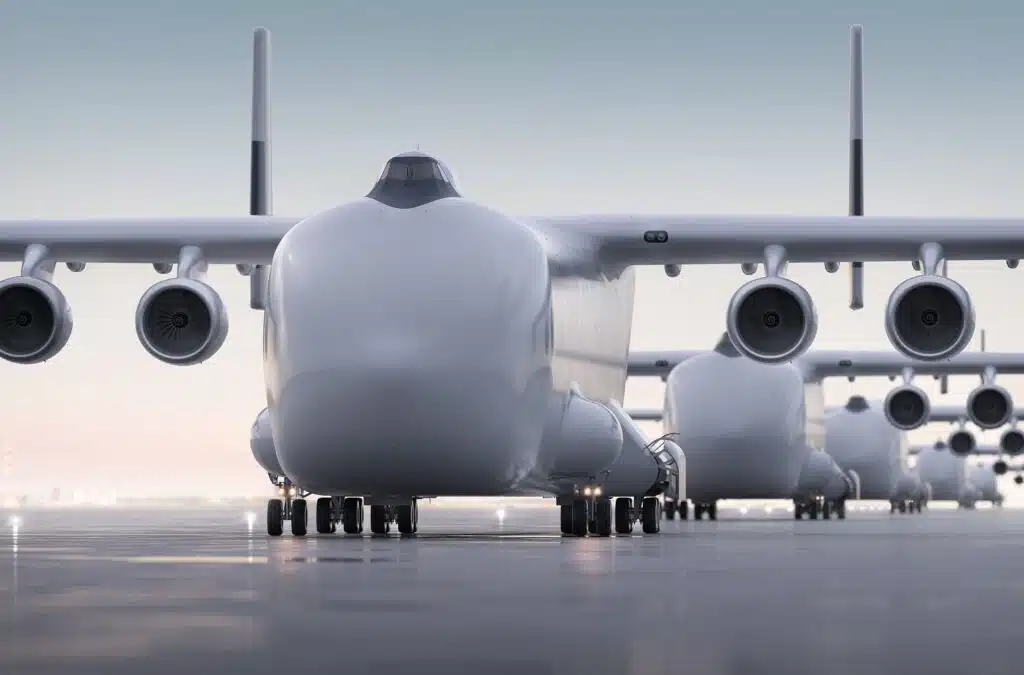
The wind turbine blades need to be transported to remote onshore locations consisting of a mere paved landing strip to build remote wind farms.
It would triple the acreage where wind is economically viable globally.
The company said these turbines could add up to 216GW to the US grid, supplying up to 40 percent of US electricity by 2050.
The result? Energy prices would be cut by 16 percent, and 760 million metric tonnes of CO2 emissions nixed annually – not bad.
In fact, the energy company is tripling the current $ 1.2 trillion-per-year spend in the hopes of building more wind farms and reaching net zero by 2050.
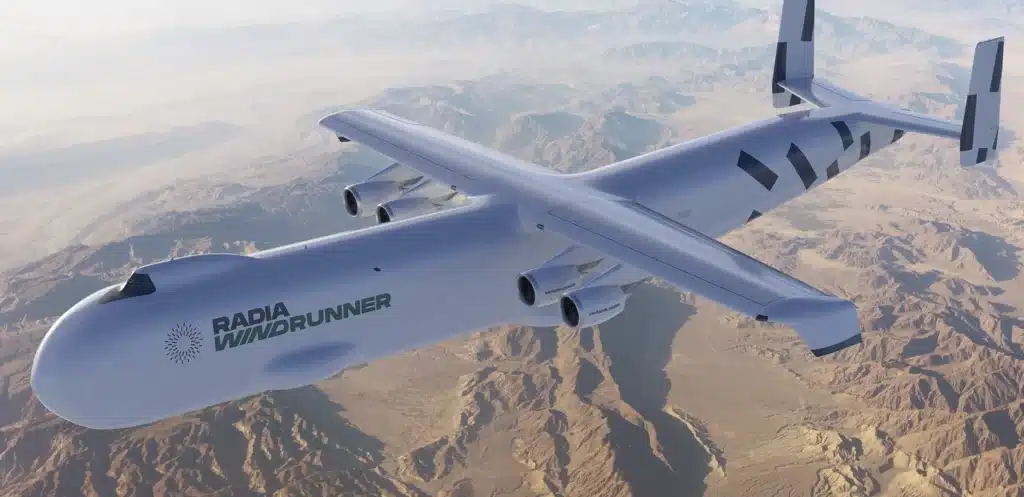
In a recent episode of WFE’s Meet the Leader podcast aerospace engineer and founder and CEO of Radia, Mark Lundstrom, about his motivations.
“Imagine offshore-sized wind turbines deployed onshore. What this enables you to do is have a path to the cheapest energy in the world and the cheapest green energy in the world – and it’s done by using basically existing technology,” Lundstrom said.
“Today, the turbines are simply too big to get under bridges, through tunnels, around curves – and that’s why blades are typically limited in the 70-meter range or so onshore, whereas offshore they’re well over 100 meters in length – Eiffel Tower-sized machines.”
On a separate note, the aircraft could also help humanitarian organizations supply large amounts of supplies to those in need after a natural disaster.
What’s the timeline?
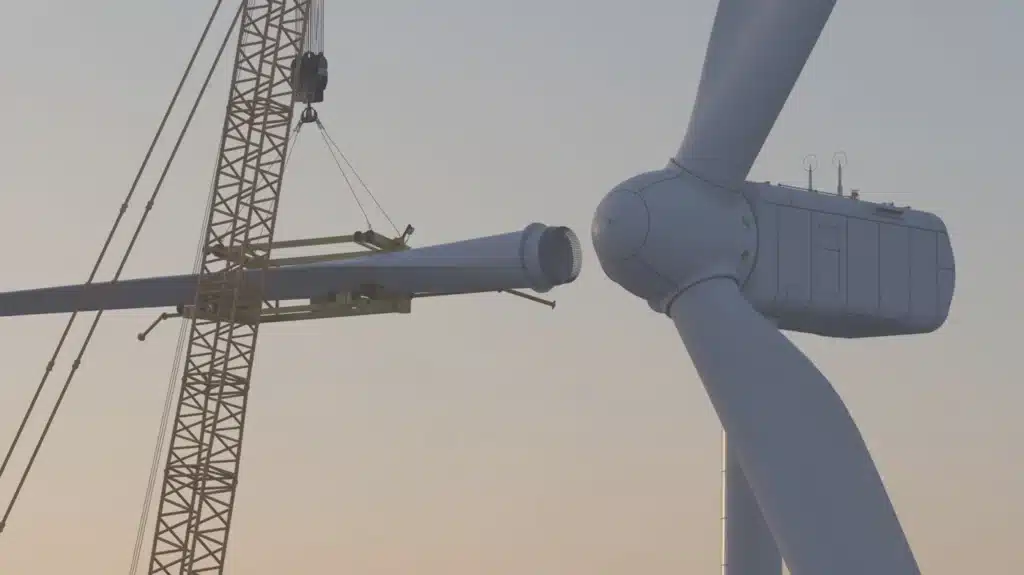
Although WindRunner is ‘very unique’ due to its size and landing capabilities, ‘there’s no new aerospace technology that’s being used.’ Lundstrom said – all the parts are already flying and certified.
Meaning the project can move ahead quickly.
“We intend to have a fairly sizable fleet operating before 2029,” Lundstrom shared.
Keep your eyes on the skies – something big is coming.
DISCOVER SBX CARS: The global premium car auction platform powered by Supercar Blondie

London-based Amelia cut her journalistic teeth covering all things lifestyle, wellness, and luxury in the UK capital. Fast-forward a decade and the senior content writer and editor has put pen to paper for glossy magazines, busy newsrooms, and coveted brands. When her OOO is on from writing about cars and heading up on-site SEO you can find her spending quality time with her young family, in the gym, or exploring the city she loves.


